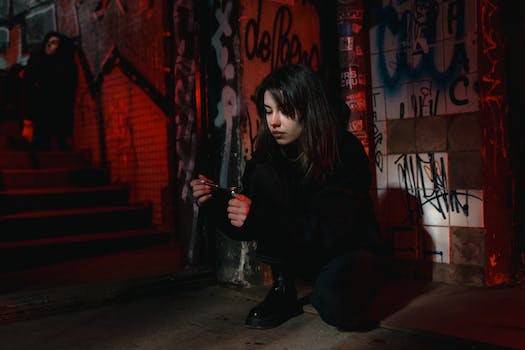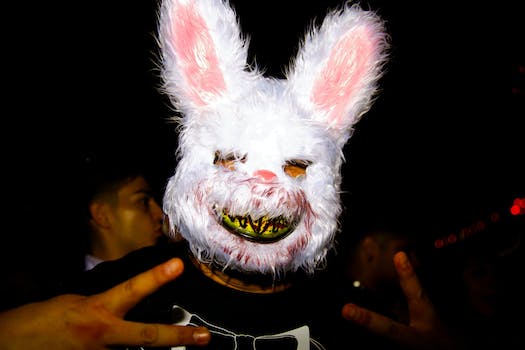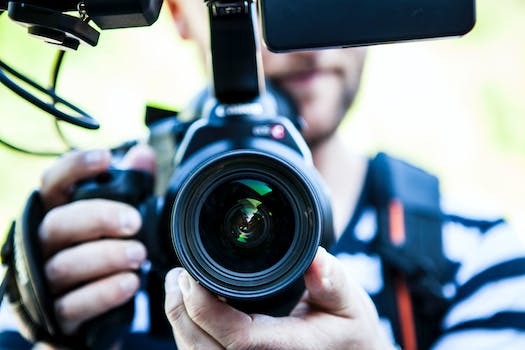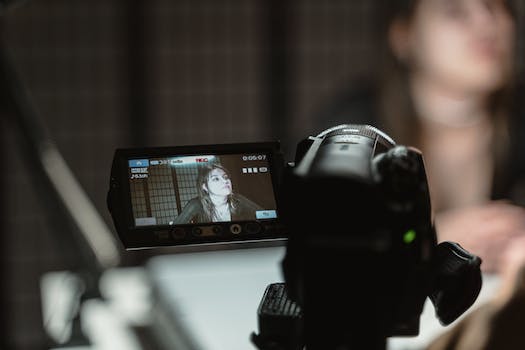The Evolution of Horror Movie Special Effects has been a fascinating journey through the years. From the early days of practical effects to the current era of advanced CGI, horror movies have constantly pushed the boundaries of creativity and terror. This article explores the remarkable progress made in special effects, highlighting the techniques, innovations, and the impact they have had on the genre. Prepare to be amazed as we delve into the spine-chilling world of horror movie special effects.
- 1. Introduction
- 1.1. Definition of Horror Movie Special Effects
- 1.2. Importance of Special Effects in Horror Movies
- 1.3. Evolution of Horror Movie Special Effects
- 1.4. The Role of Special Effects in Creating Suspense and Fear
- 1.5. Famous Horror Movies Known for their Special Effects
- 2. Types of Horror Movie Special Effects
- 2.1. Practical Effects
- 2.2. Makeup and Prosthetics
- 2.3. Creature Animatronics
- 2.4. Visual Effects (VFX)
- 2.5. Sound Effects
- 3. Techniques and Tools used in Horror Movie Special Effects
1. Introduction
Horror movies have always been a popular genre in the film industry, captivating audiences with their ability to evoke fear and suspense. One of the key elements that contribute to the success of horror films is the use of special effects. Over the years, horror movie special effects have evolved significantly, becoming more realistic and terrifying. This article explores the evolution of horror movie special effects, from the early days of practical effects to the modern advancements in CGI (Computer Generated Imagery).
1.1. Definition of Horror Movie Special Effects
Horror movie special effects refer to the techniques and visual elements used in the creation of terrifying and realistic scenes in horror films. These effects aim to elicit fear, shock, and suspense in the audience, enhancing the overall experience of watching a horror movie.
Special effects in horror movies have evolved significantly over the years, with advancements in technology and creativity pushing the boundaries of what can be achieved on screen. From practical effects using makeup, prosthetics, and props to computer-generated imagery (CGI) and digital effects, filmmakers continually strive to create more immersive and terrifying experiences for viewers.
The use of special effects in horror movies allows filmmakers to bring supernatural creatures, gory injuries, creepy atmospheres, and otherworldly environments to life. Whether it’s a terrifying monster, a haunting ghost, or a brutal murder scene, these effects help to intensify the horror and suspense, making the audience jump out of their seats.
In this article, we will explore the evolution of horror movie special effects, from the early days of practical effects to the modern era of CGI and digital wizardry. We will delve into the techniques, innovations, and iconic moments that have shaped the horror genre and continue to thrill audiences around the world.
1.2. Importance of Special Effects in Horror Movies
Special effects play a crucial role in enhancing the overall experience and impact of horror movies. These visual and auditory techniques are used to create realistic and terrifying scenes that captivate audiences and leave them on the edge of their seats. The evolution of special effects in horror movies has been remarkable, as advancements in technology continue to push the boundaries of what can be achieved. From classic practical effects like makeup and prosthetics to modern CGI (Computer Generated Imagery), filmmakers have been able to bring their darkest and most horrifying visions to life. In this article, we will explore the importance of special effects in horror movies and how they have contributed to the genre’s evolution.
1.3. Evolution of Horror Movie Special Effects
Horror movies have been captivating audiences for decades, with their ability to create a sense of fear and suspense. One of the key elements that contribute to the success of these films is the special effects used to bring terrifying creatures and spine-chilling moments to life. Over the years, the evolution of horror movie special effects has been truly remarkable, with advancements in technology allowing filmmakers to push the boundaries of what is possible on screen. From practical effects to computer-generated imagery (CGI), the world of horror movie special effects has come a long way, and continues to evolve with each passing year.
1.4. The Role of Special Effects in Creating Suspense and Fear
Special effects play a crucial role in the creation of suspense and fear in horror movies. These visual and auditory elements are carefully designed to intensify the overall atmosphere and heighten the audience’s sense of unease. By utilizing various techniques, such as prosthetics, animatronics, computer-generated imagery (CGI), and sound effects, filmmakers are able to bring terrifying creatures, supernatural phenomena, and gruesome scenes to life. The incorporation of special effects not only enhances the narrative but also allows filmmakers to push the boundaries of what is visually possible, immersing viewers in a world of horror and suspense.
1.5. Famous Horror Movies Known for their Special Effects
Horror movies have always fascinated audiences with their ability to create suspense, terror, and a sense of dread. One of the key elements that contribute to the success of these films is the special effects used to bring the terrifying creatures and gruesome scenes to life. Over the years, horror movie special effects have evolved significantly, pushing the boundaries of what is possible and leaving audiences in awe. In this article, we will explore some of the famous horror movies known for their groundbreaking special effects.
2. Types of Horror Movie Special Effects
Horror movies have always relied on special effects to create the thrilling and terrifying experiences that captivate audiences. Over the years, the evolution of horror movie special effects has seen the development of various types. These effects play a crucial role in enhancing the suspense, horror, and overall impact of the films. Here are some of the most notable types of horror movie special effects:
1. Practical Effects: Practical effects involve real-life physical props, makeup, prosthetics, and animatronics to create the desired horror elements. This method of special effects can range from simple blood splatters to complex creature designs. Practical effects often provide a visceral and authentic feel to the horror scenes.
2. CGI Effects: With the advancement of technology, computer-generated imagery (CGI) has become a popular choice for horror movie special effects. CGI allows filmmakers to create realistic and fantastical creatures, environments, and supernatural phenomena that would be challenging or impossible to achieve with practical effects alone. CGI effects offer endless possibilities for bringing nightmarish visions to life on the screen.
3. Makeup Effects: Makeup effects are an integral part of horror movie special effects. Skilled makeup artists use prosthetics, masks, and other materials to transform actors into horrifying creatures or to depict gruesome injuries and disfigurements. The artistry and attention to detail in makeup effects can greatly contribute to the overall believability and scare factor of a horror film.
4. Miniatures and Models: Miniatures and models are often utilized in horror movies to create atmospheric sets, creepy locations, or to depict large-scale destruction. These practical effects can add a sense of realism and depth to the visuals, especially when combined with other special effects techniques.
5. Sound Effects: While not visual in nature, sound effects play a crucial role in horror movie special effects. Creepy soundscapes, bone-chilling screams, unsettling whispers, and other auditory elements greatly contribute to the overall atmosphere and suspense of a horror film. Sound effects can heighten the impact of the visual effects and evoke an emotional response from the audience.
In conclusion, the evolution of horror movie special effects has brought about a wide range of techniques and methods to create terrifying and captivating visuals. From practical effects to CGI, makeup effects to miniatures, each type of special effect contributes to the unique and immersive experience of watching a horror film.
2.1. Practical Effects
Practical effects are an essential element in creating realistic and captivating horror movie scenes. Unlike computer-generated imagery (CGI), practical effects involve physical props, makeup, prosthetics, and various other techniques to bring the terrifying visions to life. These effects add a tangible and visceral quality to the horror genre, making the audience’s experience more immersive and intense. From blood and gore to creature design and stunts, practical effects have been a staple in horror movies for decades. Let’s explore the different types of practical effects used in horror movie productions.
2.2. Makeup and Prosthetics
Makeup and Prosthetics
Makeup and prosthetics are crucial elements in creating realistic and terrifying horror movie special effects. These techniques have evolved significantly over the years, allowing filmmakers to bring their darkest and most imaginative visions to life. Makeup artists and special effects teams work together to transform actors into horrifying creatures, monsters, and otherworldly beings.
The use of makeup in horror movies dates back to the early days of cinema. In the past, basic techniques such as applying greasepaint or using simple prosthetic pieces were used to create minor effects. However, with advancements in technology and the growing demand for more realistic and stunning effects, makeup artists have embraced innovative techniques and materials to achieve mind-blowing results.
Today, silicone prosthetics, foam latex appliances, and other specialized materials are commonly used in horror movie makeup. These materials allow for greater flexibility and durability, ensuring that the prosthetics can withstand the demands of intense action sequences and close-up shots. Additionally, advanced makeup techniques such as airbrushing, sculpting, and blending have become standard practice, enabling artists to create intricate details and lifelike textures on the actors’ faces and bodies.
Makeup and prosthetics not only enhance the visual impact of horror movies but also play a crucial role in character development. The physical transformation of actors into terrifying creatures helps to establish a sense of horror and suspense, immersing the audience in the terrifying world created by the filmmakers. The skillful application of makeup and prosthetics can evoke strong emotional responses, making the horror movie experience more intense and memorable.
In conclusion, makeup and prosthetics are essential components of horror movie special effects. The evolution of these techniques has revolutionized the way filmmakers bring their chilling visions to the screen. With advanced materials, innovative techniques, and skilled artists, the boundaries of horror movie special effects continue to be pushed, leaving audiences in awe and terror.
2.3. Creature Animatronics
Creature animatronics is a type of horror movie special effect that involves the use of robotic creatures or monsters. These animatronics are designed to mimic the movements and appearance of real creatures, creating a sense of realism and fear in the audience. They are often used in horror movies to bring terrifying creatures to life, such as werewolves, zombies, or giant monsters. Creature animatronics require skilled technicians and engineers to design and operate them, as they involve complex mechanisms and electronics. These special effects can be incredibly effective in creating suspense and terror, as they allow filmmakers to create creatures that are physically present on the set and interact with the actors. By using creature animatronics, horror movies can deliver intense and thrilling experiences to the audience.
2.4. Visual Effects (VFX)
Visual effects (VFX) play a crucial role in the creation of horror movie special effects. These effects are used to enhance the terrifying elements of a horror film and create an immersive experience for the audience. VFX technology has come a long way over the years, revolutionizing the way horror movies are made.
There are various types of horror movie special effects that rely heavily on VFX. One of the most common types is the creation of supernatural creatures or monsters. Through the use of computer-generated imagery (CGI), VFX artists can bring to life terrifying creatures that would otherwise be impossible to achieve with practical effects alone.
Another type of horror movie special effect that utilizes VFX is the creation of atmospheric and environmental elements. VFX can be used to enhance the mood and tone of a horror film by manipulating lighting, shadows, and weather conditions. This technique allows filmmakers to create a more immersive and chilling atmosphere.
In addition to creatures and atmospheric effects, VFX also plays a significant role in creating gory and gruesome scenes. Using VFX, filmmakers can add realistic blood splatters, wounds, and dismemberments to make the horror scenes more visceral and shocking. This technology allows for a more intense and graphic depiction of horror elements.
Overall, the evolution of horror movie special effects has been greatly influenced by the advancements in VFX technology. It has opened up endless possibilities for filmmakers to create terrifying and realistic scenes that captivate and frighten audiences. As VFX continues to improve and push boundaries, we can expect even more innovative and terrifying horror movie special effects in the future.
2.5. Sound Effects
Sound Effects:
Sound effects play a crucial role in enhancing the overall experience of horror movie special effects. They help create a terrifying atmosphere, build tension, and evoke emotional responses from the audience. From bone-chilling screams to eerie footsteps, sound effects add a layer of realism and intensity to the on-screen horrors.
Different types of sound effects are used in horror movies to achieve specific effects. For example, sharp and sudden sounds like creaking doors or screeching violins are often employed to startle the viewers and create jump scares. Low-frequency rumbling sounds can create a sense of impending doom or signal the presence of a lurking danger.
The use of sound effects in horror movies has evolved over time. In the early days of cinema, filmmakers relied on practical sound effects, such as using everyday objects to mimic eerie sounds. With advancements in technology, the possibilities for creating unique and realistic sound effects have expanded. Modern horror films often make use of digital sound design and manipulation to create otherworldly and haunting sounds.
Sound effects, when used effectively, can elevate the impact of horror movie special effects and leave a lasting impression on the audience. They are an essential component of the evolving world of horror movie special effects.
3. Techniques and Tools used in Horror Movie Special Effects
Special effects play a crucial role in enhancing the horror experience for moviegoers. Over the years, the techniques and tools used in horror movie special effects have evolved significantly. From the early days of practical effects to the advanced digital technologies of today, filmmakers have continuously pushed the boundaries to create more realistic and terrifying visuals.
One of the most commonly used techniques in horror movie special effects is prosthetics. Prosthetic makeup involves creating lifelike creatures and monsters by applying specialized materials directly onto actors’ faces and bodies. This technique allows for the transformation of actors into terrifying creatures, such as zombies, vampires, or werewolves.
Another technique widely used in horror movies is animatronics. Animatronics involves the use of robotic devices to bring creatures and monsters to life. These devices are controlled by puppeteers who manipulate their movements and expressions, creating realistic and often bone-chilling effects.
In recent years, computer-generated imagery (CGI) has become an integral part of horror movie special effects. CGI allows filmmakers to create visually stunning and supernatural elements that would be impossible to achieve using practical effects alone. From creating realistic blood splatters to bringing otherworldly creatures to life, CGI has revolutionized the horror genre.
Additionally, sound effects play a significant role in intensifying the horror experience. Foley artists use various tools and techniques to create spine-chilling sounds, such as creaking doors, footsteps, or eerie whispers. These sound effects enhance the atmosphere and immerse the audience deeper into the terrifying world of horror movies.
Overall, the evolution of horror movie special effects has been driven by a combination of innovative techniques and advanced tools. Prosthetics, animatronics, CGI, and sound effects all contribute to creating a truly immersive and spine-tingling horror experience for audiences.
3.1. Physical Props and Models
Physical props and models are essential elements in creating realistic and impactful horror movie special effects. These tangible objects add a sense of authenticity and depth to the scenes, augmenting the fear factor for the viewers. The use of physical props allows the audience to engage with the movie on a more visceral level, as they can see and even touch the horrifying objects on the screen.
In horror movies, physical props and models come in various forms. For example, gruesome masks, severed body parts, creepy creatures, and blood-soaked weapons are commonly utilized to create a chilling atmosphere. These props are meticulously designed and crafted to ensure they appear lifelike and evoke a sense of dread.
Special effects artists and prop makers employ a range of techniques and tools to bring these physical props to life. Sculpting, molding, and casting are often used to create intricate and detailed models. Materials like silicone, latex, foam, and various types of paint are employed to achieve realistic textures and finishes.
Moreover, advanced technologies such as 3D printing and animatronics are increasingly incorporated into the creation of physical props and models. This allows for more precise and intricate designs, as well as enhanced movement and functionality. The combination of traditional craftsmanship with cutting-edge techniques elevates the quality of horror movie special effects to new heights.
In conclusion, physical props and models play a vital role in the evolution of horror movie special effects. They enhance the visual impact and immerse the audience in a terrifying world. The techniques and tools used in creating these props continue to advance, pushing the boundaries of what is possible in terms of realism and terror.
3.2. Blood and Gore Effects
Blood and Gore Effects:
One of the key elements in horror movie special effects is the use of blood and gore. These effects are used to create a sense of fear, disgust, and shock in the audience. From simple cuts and bruises to gruesome mutilations, blood and gore effects play a vital role in making horror movies more realistic and terrifying.
There are various techniques and tools used to achieve blood and gore effects. Special effects makeup artists often use prosthetics, fake blood, and other materials to create realistic wounds and injuries on the actors. They may also use animatronics or computer-generated imagery (CGI) to enhance the visual impact of the blood and gore effects.
In addition to the visual effects, sound effects also play a crucial role in creating the illusion of blood and gore. The squelching sound of a knife cutting through flesh or the splattering sound of blood hitting the ground can greatly enhance the intensity of a horror movie scene.
Overall, blood and gore effects are essential in horror movies as they add a visceral and shocking element to the storytelling. They allow filmmakers to push the boundaries of what is visually disturbing and create unforgettable moments that linger in the minds of the audience.
3.3. Prosthetic Makeup Application
Prosthetic makeup application is an essential technique used in the creation of horror movie special effects. This technique involves the use of prosthetic appliances, which are artificial body parts made from materials like silicone or latex. These appliances are meticulously crafted to resemble various horrifying creatures, monsters, or injuries that bring fear and suspense to the audience.
To apply prosthetic makeup, several tools are used to achieve realistic and convincing results. One of the primary tools is an adhesive, such as spirit gum or silicone-based adhesive, which is used to securely attach the prosthetic appliance to the actor’s skin. To blend the edges of the prosthetic seamlessly with the actor’s skin, a special adhesive called pros-aide is often used.
Makeup artists also utilize sculpting tools like spatulas and sculpting wax to create and shape prosthetic appliances. These tools allow them to add intricate details and textures to the prosthetics, enhancing their realism. Additionally, brushes of various sizes are used to apply different layers of makeup, including foundation, color pigments, and blood effects.
Another crucial tool in prosthetic makeup application is an airbrush. The airbrush helps in achieving smooth and even coverage of makeup, especially when creating complex character designs or special effects. It allows the artist to control the intensity and distribution of colors, resulting in a more professional and visually captivating appearance.
Overall, the techniques and tools used in prosthetic makeup application play a vital role in the evolution of horror movie special effects. They enable makeup artists to transform actors into terrifying creatures and create gruesome injuries that heighten the fear factor in horror films.
3.4. Green Screen and Chroma Key
Green screen and chroma key are essential techniques and tools used in horror movie special effects. These techniques allow filmmakers to superimpose or replace a specific color with another image or footage. The green screen is a specially designed backdrop consisting of a solid green color, while chroma key is the process of digitally removing that green color and replacing it with a different background or visual element. This technology has revolutionized the way horror movies are made, as it enables the creation of realistic and terrifying scenes that would be otherwise impossible to achieve. By utilizing green screen and chroma key, filmmakers can seamlessly integrate actors, creatures, and other elements into horrifying environments, resulting in spine-chilling visuals that enhance the overall sense of fear and suspense for the audience.
3.5. Computer-Generated Imagery (CGI)
Computer-generated imagery (CGI) has revolutionized the field of special effects in horror movies. This technique involves using computer software to create realistic and lifelike visuals that would be difficult or impossible to achieve through practical effects alone. CGI allows filmmakers to bring their most terrifying and imaginative visions to life, enhancing the overall impact and intensity of horror movie scenes.
CGI in horror movies is used in various ways to create spine-chilling and unforgettable moments. One common application is the creation of monstrous creatures and supernatural entities. Through the use of CGI, filmmakers can design and animate creatures with intricate details, realistic movements, and terrifying features that would be impossible to achieve using traditional makeup and prosthetics alone.
CGI is also used to enhance gore and blood effects in horror movies. By digitally manipulating the visuals, filmmakers can create gruesome and visceral scenes that are both shocking and realistic. This allows for more creative and extreme depictions of violence and gore, pushing the boundaries of what can be shown on screen.
Additionally, CGI is utilized to create atmospheric and otherworldly environments in horror movies. By digitally constructing elaborate sets and landscapes, filmmakers can transport viewers into haunting and nightmarish realms. Whether it’s a haunted house, a desolate graveyard, or a demonic dimension, CGI helps to enhance the overall ambiance and immerse audiences in the terrifying world of the film.
The tools used in CGI for horror movie special effects are constantly evolving and becoming more advanced. Powerful computer software, such as Autodesk Maya, Adobe After Effects, and Houdini, are commonly used by visual effects artists to create and manipulate CGI elements. These tools provide a wide range of capabilities, including modeling, texturing, animation, and compositing, allowing artists to bring their creative visions to fruition.
In conclusion, CGI plays a vital role in the evolution of horror movie special effects. It enables filmmakers to push the boundaries of imagination and deliver truly terrifying and immersive experiences for audiences. With the continuous advancements in technology and software, the future of CGI in horror movies looks promising, promising even more horrifying and visually stunning spectacles.
Conclusion
In conclusion, the evolution of horror movie special effects has paved the way for a thrilling and captivating cinematic experience. From the early days of practical effects to the modern advancements in CGI technology, filmmakers continue to push the boundaries of imagination and scare audiences in unimaginable ways.





